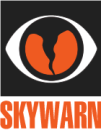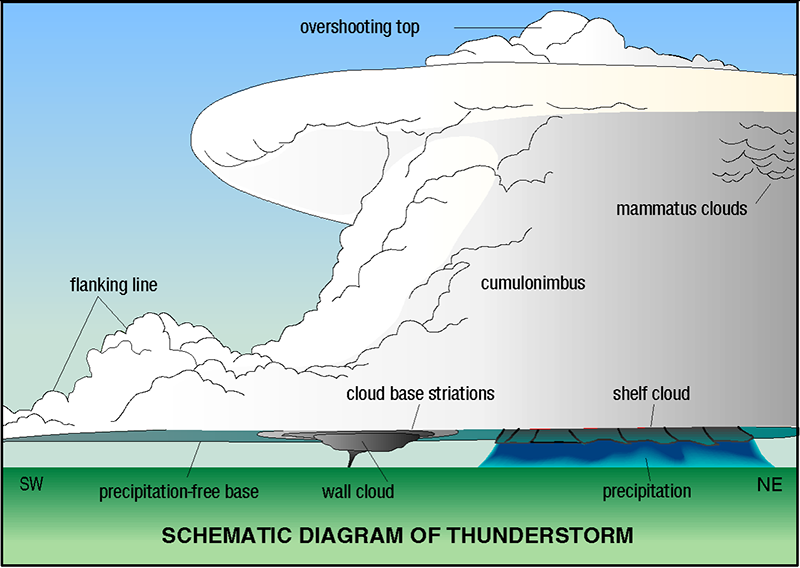|
Who are Storm Spotters?
Virtually every community has some form of spotter network. Often, local fire and police personnel are trained to observe and report severe weather, partly due to their extensive radio communication and 24-hour operations. Citizens may also be an active part of the spotter network, some with an avid interest in the weather and many without. Some spotters are amateur radio operators. All share a sense of responsibility to their neighbors.
Why become a storm spotter?
Real-time reports are critical in issuing warnings and saving lives. That’s an indisputable fact. Spotters provide this real-time ground-truth of local conditions - such as hail size, wind speed, storm structure, tornado development, and local damage - to help warn the public. Even as new technology allows the National Weather Service (NWS) to issue warnings with more lead time, spotters will always serve as a key link between radar indications of severe weather and what’s happening on the ground.
What is Skywarn?
SKYWARN is a program sponsored by the National Weather Service. The program is made up of thousands of volunteers who attend regular training and then scan the skies of their communities identifying and reporting critical storm information. These volunteers, sometimes organized under the SKYWARN banner in the U.S., are typically trained by NWS forecasters to be the eyes and ears of both the warning forecasters and the local public safety networks.
Do spotters “chase” storms?
Generally, no. Some may be mobile, such as law enforcement officers; and others may track storms, depending on how the local network is structured. However, most spotters simply report the weather that occurs where they are.
Do spotters need special tools or equipment?
Maybe – or maybe not. All spotters need a reliable and effective means of communication with their network. Some may invest in a rain gage or perhaps an anemometer for measuring wind speed.
How do I become a community storm spotter?
Although the NWS often provides training, spotter groups in most areas are organized by emergency management officials or the police or fire department. If you are interested in becoming a spotter, check with these agencies to find out who serves as spotters in your area.
How do I become a spotter in the Quad Cities service area?
We have assembled a guide for becoming a spotter in our area. Please check it out at: www.weather.gov/dvn/spotters#becomeaspotter
Is there an age requirement for attending a class or becoming a spotter?
Short answer: not really. People of all ages attend spotter training classes. Those ages 10 and up are likely to get the most from the class. Youth who are interested in registering as spotters with the NWS Quad Cities are registered along with an adult in the same household.
What training is required?
A typical Skywarn training class conducted by the NWS lasts about 2 hours. Classes include information on identifying storm features, effective positioning strategy, safety, and severe weather communication. The National Weather Service recommends that spotters train every 2 years to remain current.
When will a class be offered in my community?
In the Quad Cities service area, spotter training classes are conducted from late February through early April. Classes are offered in alternating years, with one class annually in the large population centers. Scheduling of spotter training classes begins around the New Year. A list of classes currently scheduled can be found at: www.weather.gov/dvn/spotters_schedule
Can I attend a class in another area?
Short answer: Yes, you can. However, keep in mind that attending a class in your own county will give you the most insight into the Skywarn activities in your home community. It is also generally good practice to train with the people you will be working with. However, if you are unable to attend your local class, you can certainly attend a class in another area.
How often should I retrain?
The NWS recommends that spotters retrain every 2 years. For NWS spotters in the Quad Cities service area, we require that spotters retrain every 4 years to remain active in our database.
Can I take spotter training online instead of attending a class?
At this time the NWS Quad Cities only accepts new spotter registrations and updates from people who attend a class in person or virtually. The reason...relaying accurate information effectively is critical during severe weather. Therefore, we feel that it is important to attend spotter training in person or virtually to optimize this process.
I don't want to be a spotter. Can I attend a class anyway?
Sure! Many people attend spotter training classes because they simply have an interest in weather and want to learn more about storms. Some even attend because they have fear of storms and hope that learning more will ease their fear. Scout troops, high school science classes, and many others also often attend spotter training.
Can I schedule a spotter training class for my group?
Because classes must be complete before severe weather season begins, we must limit the number of classes to one or two per county. This means that we usually are not able to schedule classes for individual groups. Spotter training classes are coordinated through the county emergency manager and should include all groups and general public involved in the local storm spotting program. Check with your local emergency management officials if you are interested in hosting a class for your county.
What do spotters report?
Spotters report all kinds of hazardous weather including hail, tornadoes, and storm-related damage. The complete and most up-to-date list is available on our NWS Quad Cities Spotter Reference Sheet
|


